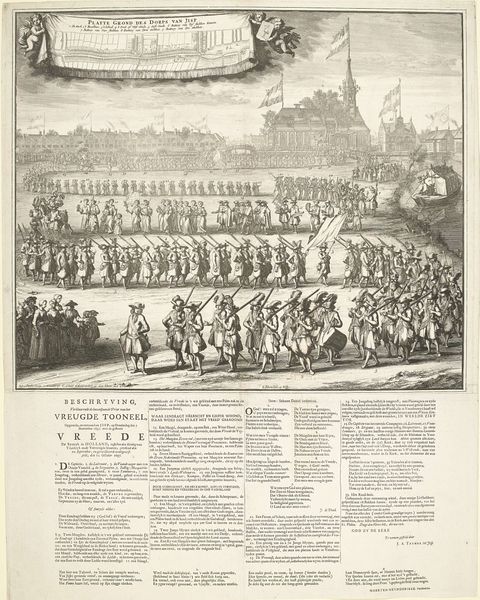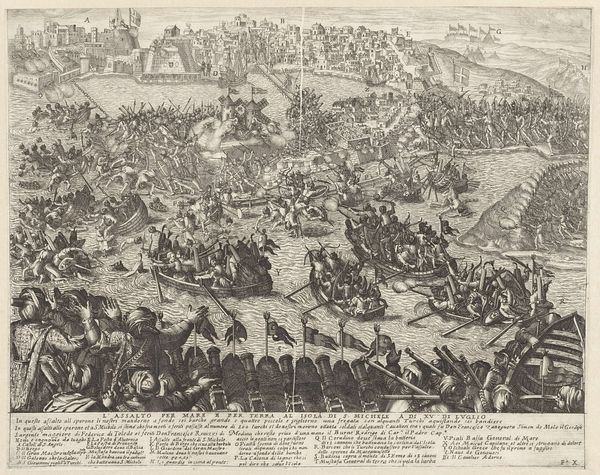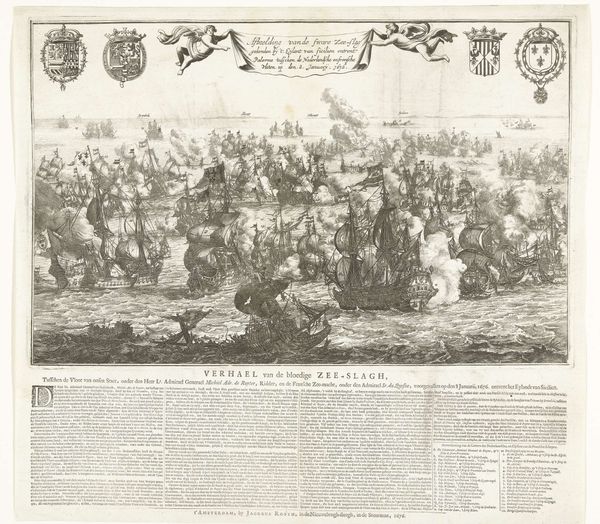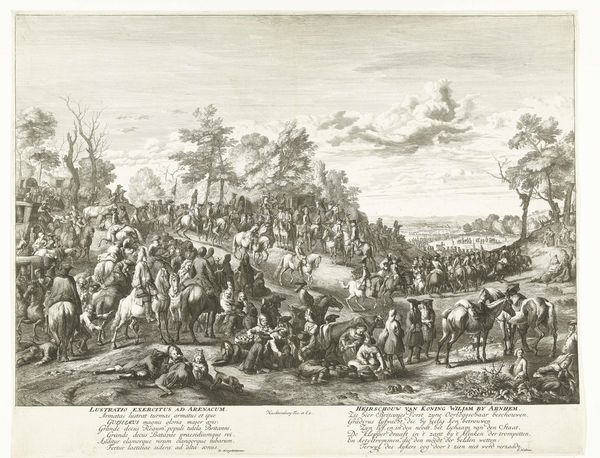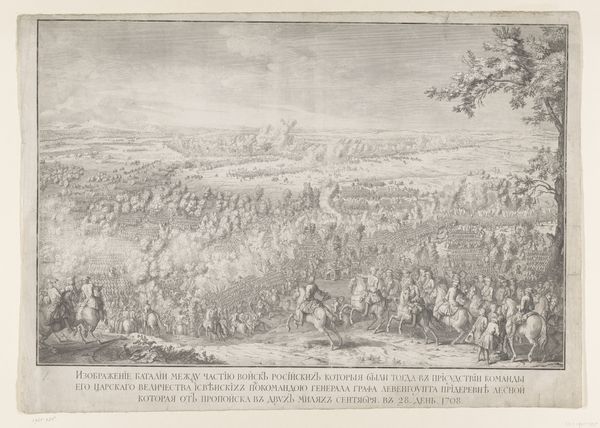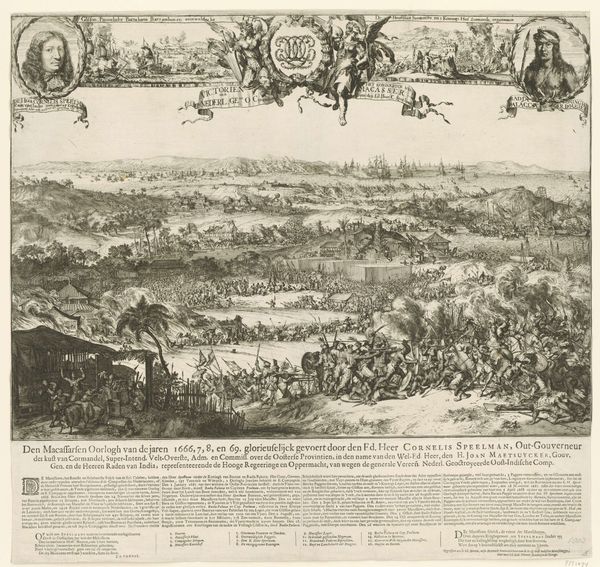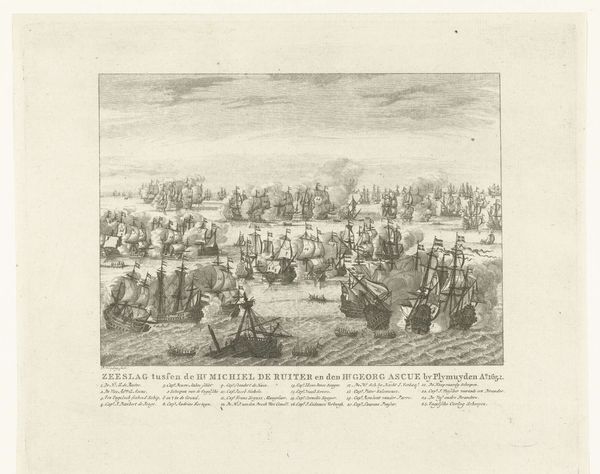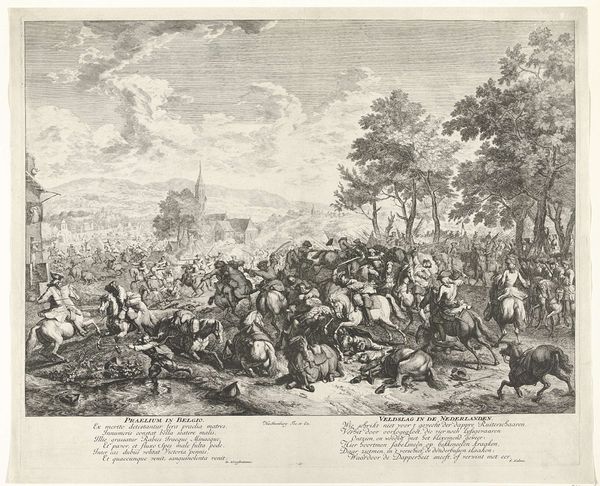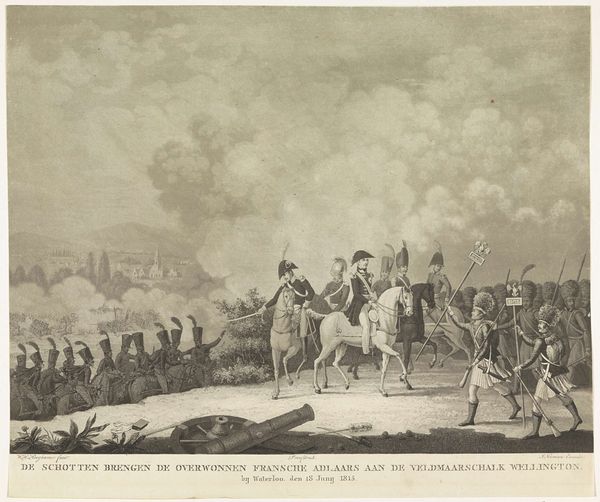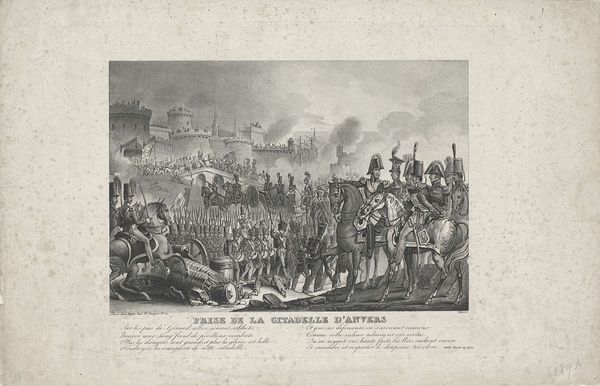
print, engraving
#
baroque
# print
#
landscape
#
history-painting
#
engraving
Dimensions: height 481 mm, width 530 mm, height 255 mm, width 518 mm
Copyright: Rijks Museum: Open Domain
Curator: Before us hangs "Slag bij Malplaquet, 1709," or "Battle of Malplaquet, 1709," an engraving dating back to, unsurprisingly, 1709, found here at the Rijksmuseum. Editor: It's incredibly detailed. Dense, almost overwhelming. I’m immediately struck by the sheer chaos depicted—a swarm of figures locked in conflict against a landscape on fire. Curator: It certainly reflects the Baroque sensibility for grand spectacle and intense emotion. Battles in art often served as propaganda, and here, likely commissioned, the print immortalizes the Battle of Malplaquet. It’s a bird’s-eye view portraying the clash between the Allied forces and the French army. Editor: Yes, there's a distinct power dynamic at play here, particularly regarding who had the resources to get immortalized via propaganda after what, was effectively, a pyrrhic victory, I suppose. How was an engraving such as this circulated, influencing perceptions and solidifying certain narratives? Curator: Mass production meant distribution became quite efficient. Consider, though, the visual language used. The dense composition reinforces this notion of overwhelming force. Note also, this composition appears just above lines of text, indicating that this print accompanied written war journals that were printed contemporaneously. It underscores that victory—though hard-fought as it may have been—did indeed belong to the Allied forces, the very consumers reading the broadside itself. Editor: The way the scene transitions into the landscape really highlights the pervasiveness of war and how it leaves an impact. Looking at this today, though, it serves as a painful reminder of the cycle of conflict, especially given the events that continue to happen in Europe. What purpose did these works serve outside propaganda or simple news reporting? Curator: Prints like this did contribute to building a shared historical consciousness among the people and reinforce ideas of national identity, not simply as passive observations, but often as calls to rally around ideologies related to warfare and the power that could be accrued through battle. Editor: It does that successfully, albeit, uncomfortably. It provides insights not only into past military strategies and victories, but on historical and ongoing attitudes towards conflict as progress and something to boast about through visual imagery.
Comments
No comments
Be the first to comment and join the conversation on the ultimate creative platform.

